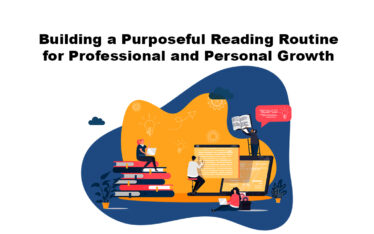In today’s interconnected and fast-paced business world, professional etiquette plays a pivotal role in building successful relationships and in advancing your career. Practicing effective etiquette demonstrates respect, cultivates positive interaction, and reflects your commitment to professionalism.
How to Demonstrate Adequate Professional Etiquette?
- Foundation of an Effective Communication is by Showing Respect
Respect forms the cornerstone of professional etiquette. Treating colleagues, clients, and superiors with respect fosters a harmonious work environment and encourages collaboration. Simple gestures like active listening, maintaining eye contact, and giving your full attention during conversations showcases your respect for others’ opinions and ideas. - Valuing Others’ Time by Being Prompt
Being punctual is more than just a habit; it is a sign of professionalism and consideration for others’ schedules. Whether it is a meeting, a deadline, or a commitment, being punctual demonstrates your commitment and reliability. Arriving on time not only respects others’ time but also contributes to the overall efficiency of the workplace.
When possible, plan to give yourself extra time between meetings to avoid being late if something unexpected happens, such as heavy traffic. If external circumstances make you late, let your colleagues, clients or managers know as soon as possible so they can change their schedules accordingly. - Identifying Apt Preference of Communication
In an age of diverse communication channels, it’s essential to consider how individuals prefer to communicate. Some may prefer emails for detailed discussions, while others might favour quick chats or phone calls. Understanding and accommodating these preferences demonstrate your adaptability and willingness to collaborate effectively. - Be an Active Listener
Active listening is a skill that often gets overlooked but is crucial for effective communication. Paying attention, asking clarifying questions, and responding thoughtfully demonstrates that you’re genuinely interested in the conversation.
Storing your phone or devices can show that you’re focused on the presentations and communications of others. Limiting your device usage can also make you more approachable. - Know the Rules of Professional Virtual Presence
In the era of remote work and virtual meetings, projecting a professional image is essential. Some unwritten rules for professional virtual communication are:- Keep your microphone muted unless you’re speaking,
- If everyone else has their camera on, turn on yours as well,
- Eat before the meeting rather than during one,
- Use a simple and professional background with minimal distractions,
- Whenever you can, make eye contact with the camera.
- Addressing by the Person’s Name
Taking someone’s name when speaking with them can convey your respect and attention. If you don’t know it or have forgotten it, you can politely ask them. Always call someone by their preferred name, and refrain from using nicknames unless they ask you to.
Use their name organically throughout the conversation without too much repetition. Next time you’re with the person, greet them by name for an additional sense of friendliness and respect. - Be Reliable
Reliability is the key to trust in any professional relationship. Keep note of the below mentioned,- Fulfil what you commit. If you commit to a specific project, meeting or task, ensure you follow through and complete your established commitment. This increases trust with colleagues and contacts and shows your reliability.
- Right communication at the right time, especially in case of delay. If unforeseen circumstances arise, communicate proactively about potential delays. Open and honest communication showcases your professionalism.
- Practicing Effective Email Response
Emails are a primary mode of communication in the workplace. Craft thoughtful responses to convey professionalism. Mind the followings while responding to emails,- Respond to emails within a reasonable timeframe, even if it’s to acknowledge receipt and provide an estimated response time.
Articulate your thoughts clearly, using a professional tone. Avoid jargons and overly complex language to ensure your message is easily understood.
- Respond to emails within a reasonable timeframe, even if it’s to acknowledge receipt and provide an estimated response time.
Mastering professional etiquette is not only about following a set of rules but about cultivating an attitude of respect, empathy, and professionalism in all your interactions. From demonstrating active listening to adapting communication preferences and excelling in virtual presence, each factor contributes to building strong relationships and a positive reputation in your professional journey. By embracing these principles of etiquette, you position yourself for success and will create a lasting impact on your colleagues, clients, and superiors.





